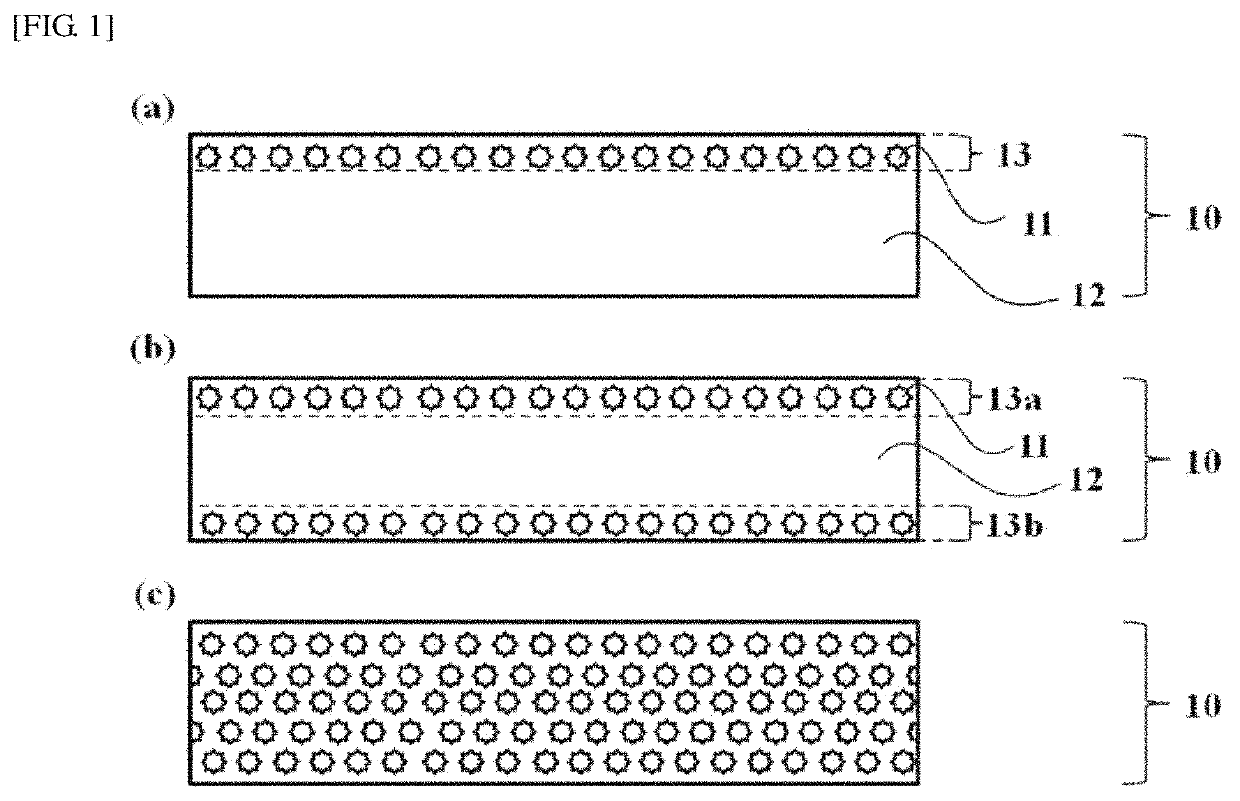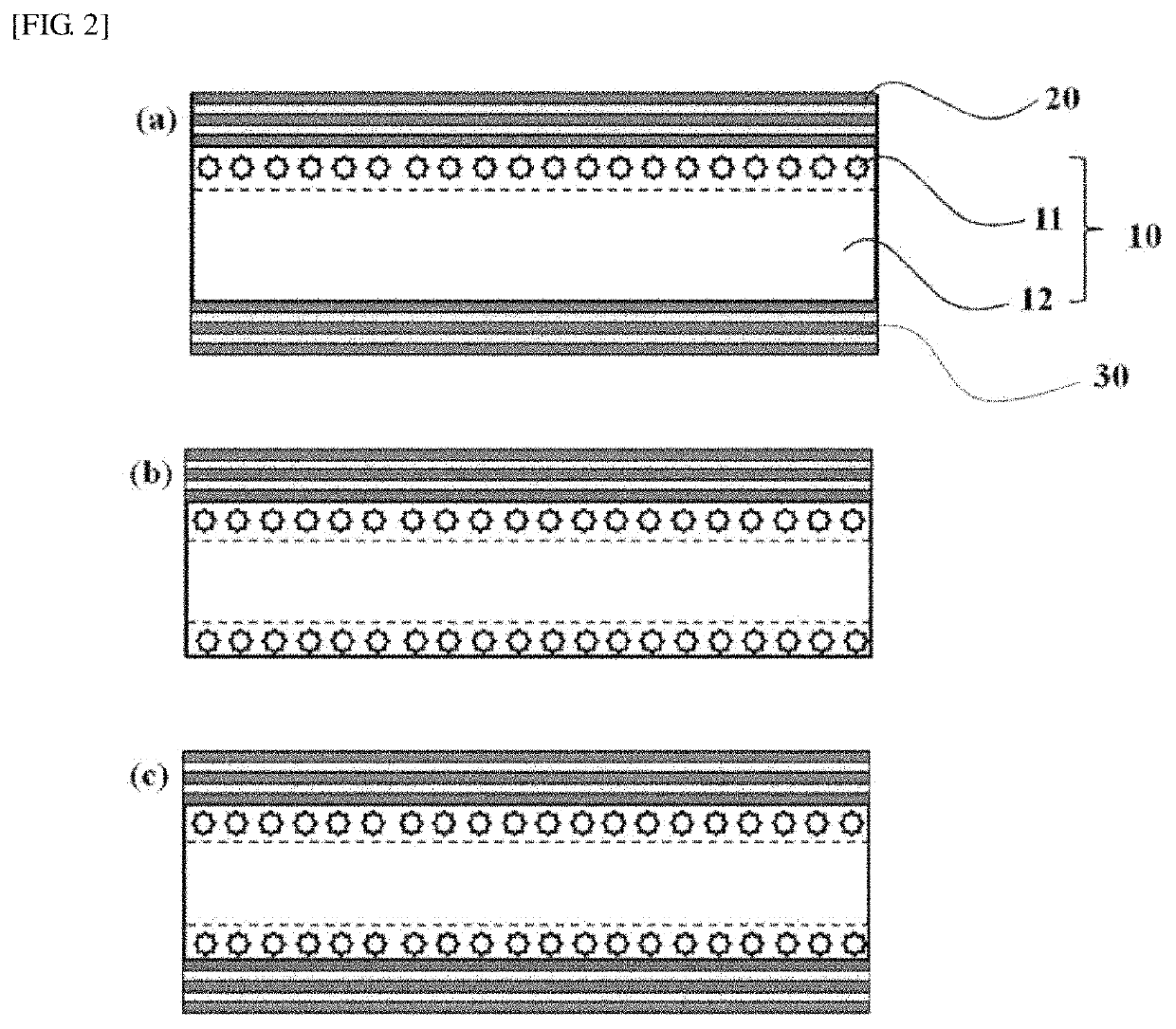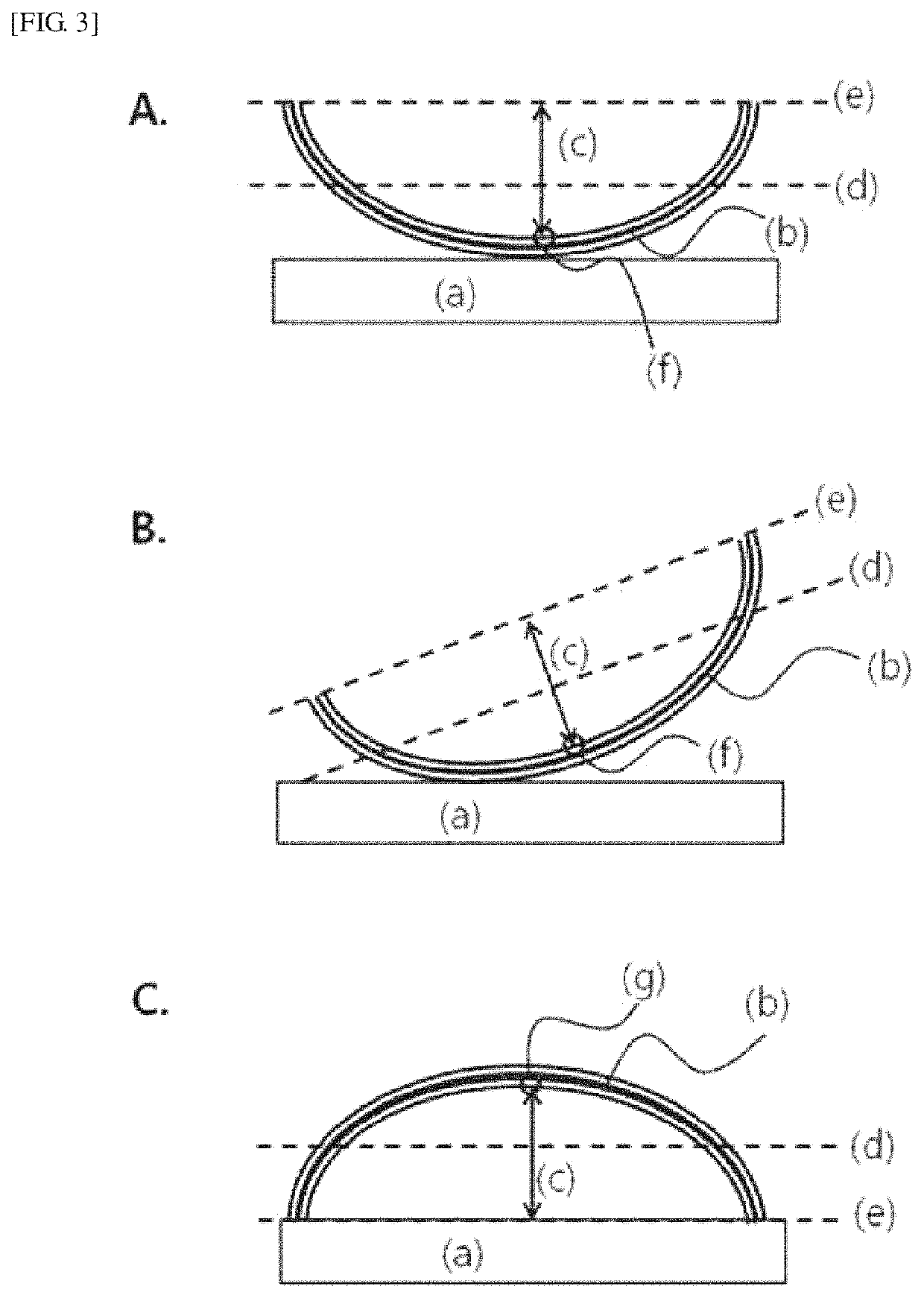Optical article and optical filter comprising same
a technology of optical filter and optical article, which is applied in the field of optical article and optical filter, can solve the problems of difficult thinness, easy breakage, and inability to apply to high-resolution camera modules with 5 or more mega pixels, and achieve the effects of suppressing transmittance, preventing ghosting, and high transmittan
- Summary
- Abstract
- Description
- Claims
- Application Information
AI Technical Summary
Benefits of technology
Problems solved by technology
Method used
Image
Examples
preparation examples 1 to 4
[0105]According to a preparation example of the present invention, an optical article having first and second absorption peaks was prepared as follows.
[0106]A near-infrared absorbent A and a near-infrared absorbent B, which had absorption maximums in the wavelength ranges of 702±5 nm and 905±5 nm, respectively, were mixed at contents shown in Table 1 below with respect to 100 parts by weight of a resin. At this time, as the resin, a polymethylmethacrylate (PMMA) resin was used, and as an organic solvent, cyclohexanone was used. Afterward, the resulting mixture was stirred using a stirrer for 24 hours or more, thereby preparing a near-infrared absorbing solution. The prepared near-infrared absorbing solution was applied to both surfaces of a polyethylene terephthalate (PET) film (A4100, manufactured by Toyobo Co., Ltd.) having a thickness of 0.1 mm, cured at 120° C. for 50 minutes, thereby preparing an optical article having near-infrared absorbing layers on both surfaces thereof as ...
examples 1 to 7
[0109]A first selective wavelength reflection layer having a dielectric multilayer film structure was formed by alternately depositing SiO2 and Ti3O5 on a first main surface of each of the optical articles prepared in Preparation Examples 1 to 4 at 110±5° C. using an E-beam evaporator. Afterward, a second selective wavelength reflection layer having a dielectric multilayer film structure was formed by alternately depositing SiO2 and Ti3O5 on a second main surface of each of the optical articles at 110±5° C. using an E-beam evaporator, resulting in an optical filter having the same structure as shown in FIG. 2C. At this time, the number of stacked layers and thickness of each of the first and second selective wavelength reflection layers are shown in Table 2 below. At this time, the thickness means the total thickness of the first or second selective wavelength reflection layer, and the unit is a micrometer (μm).
[0110]
TABLE 2SecondFirst selectiveselectivewavelengthwavelengthreflectio...
experimental example 1
[0122]To evaluate the transmittance according to an incident angle of the optical filter according to the present invention, an experiment was performed as follows.
[0123]The transmission spectrum for each of the optical filters prepared in Examples 2, 5 to 7 and Comparative Examples 4 to 6 was measured using a spectrophotometer in the wavelength range of 380 to 1,200 nm.
[0124]The transmittances of the visible light and near-infrared rays according to an incident angle were deduced by measuring the transmittances with respect to light (incident angle: 0°) incident in a vertical direction on the optical filter and light (incident angle: 30°) incident in a direction having 30° from the direction perpendicular to the optical filter. The result is shown in Table 7 and FIGS. 7 to 10. At this time, the average transmittance for the visible light refers to a calculated average value of the transmittance per wavelength in the wavelength range of 430 to 565 nm, the average transmittance for t...
PUM
| Property | Measurement | Unit |
|---|---|---|
| wavelength range | aaaaa | aaaaa |
| wavelength | aaaaa | aaaaa |
| wavelength | aaaaa | aaaaa |
Abstract
Description
Claims
Application Information
 Login to View More
Login to View More - R&D
- Intellectual Property
- Life Sciences
- Materials
- Tech Scout
- Unparalleled Data Quality
- Higher Quality Content
- 60% Fewer Hallucinations
Browse by: Latest US Patents, China's latest patents, Technical Efficacy Thesaurus, Application Domain, Technology Topic, Popular Technical Reports.
© 2025 PatSnap. All rights reserved.Legal|Privacy policy|Modern Slavery Act Transparency Statement|Sitemap|About US| Contact US: help@patsnap.com



